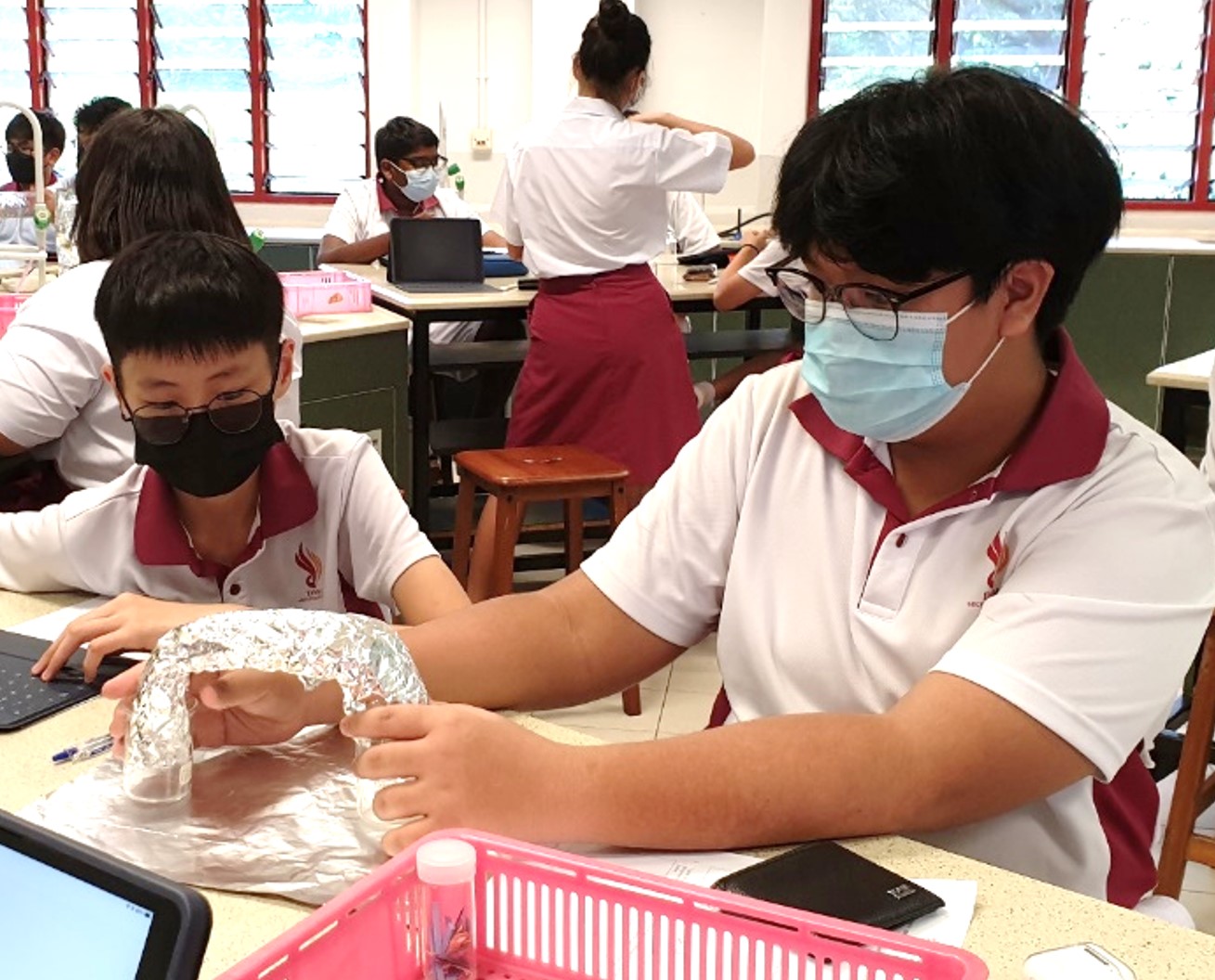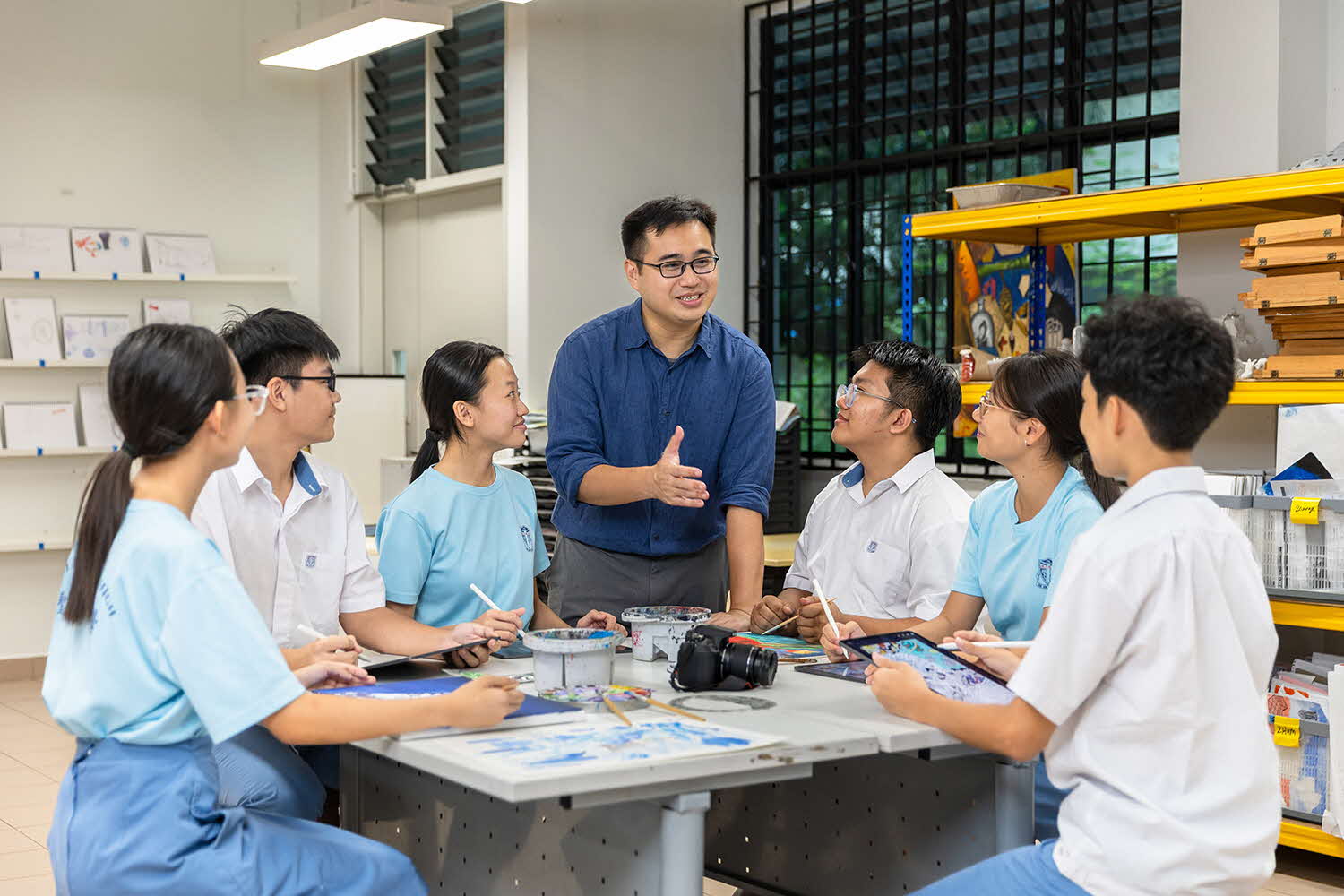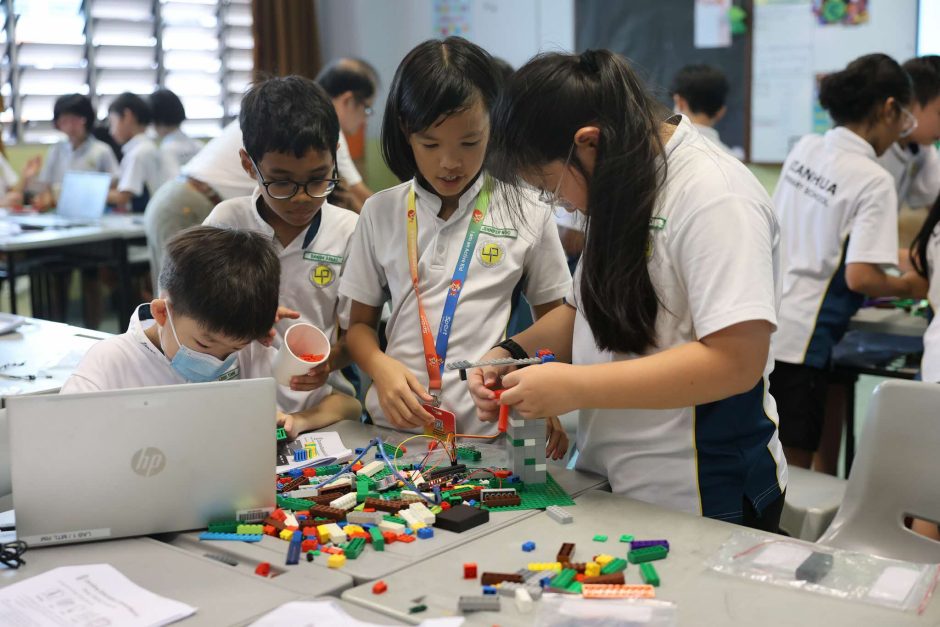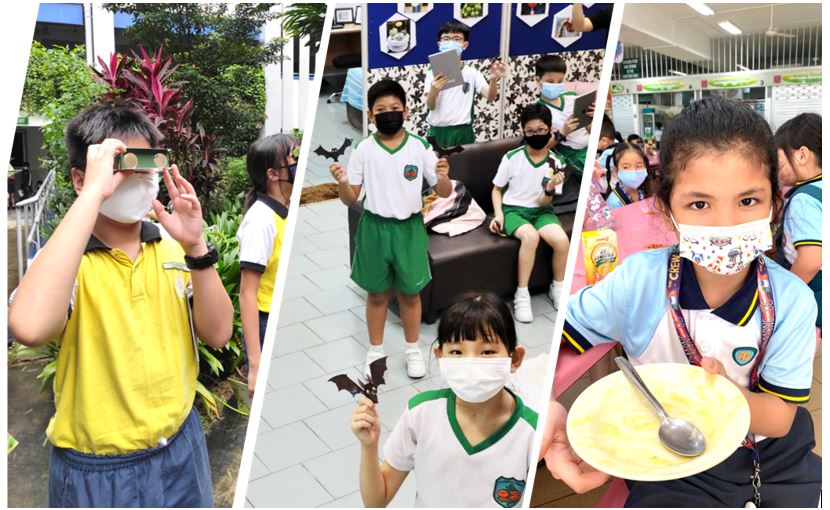Pay a visit to Damai Secondary and you may find students engrossed in building their own water distiller out of a few beakers and a tube of aluminium foil. Or they may be drawing up plans for a recycled paper parachute that would protect an egg falling from height. Or making artworks with used wooden pallets and yarn to spread the word about environmental sustainability.
All these are part of Damai Secondary’s Environmental Science Applied Learning Programme (ALP), where students engage in a series of hands-on design challenges and apply their science knowledge and design thinking principles to tackle topics ranging from climate change to water treatment and food waste.
It may look to outsiders that environmental sustainability has been an established part of school life, but the ALP is actually only two years “old”. It was started from ground zero when Damai Secondary adopted the theme of Sustainability for their ALP in 2020.
We speak to ALP coordinators Mr Justin Thong and Ms Goh Ai Lian from Damai Secondary School to hear what goes on behind building up this programme, and what they learnt from this 2-year journey.
What makes an ALP, and how do you design one?
Mr Justin Thong: It’s certainly not easy to craft our ALP from scratch! Many of us in the team are Science teachers, and we do have general knowledge about environmental sustainability. But we may not have in-depth knowledge about topics such as water treatment or energy efficiency. We had to do a lot of research to come up with the content for the ALP lessons, and design activities that would incorporate the concepts and knowledge we want students to apply.
For example, students know about the principle of filtration from Science, but we want them to gain a deeper understanding of why different materials are needed to produce clean water. Instead of giving them the answers, we got them to conduct their own experiments to layer the materials(e.g. pebbles, gravel and sand) in different order and observe the results for themselves.
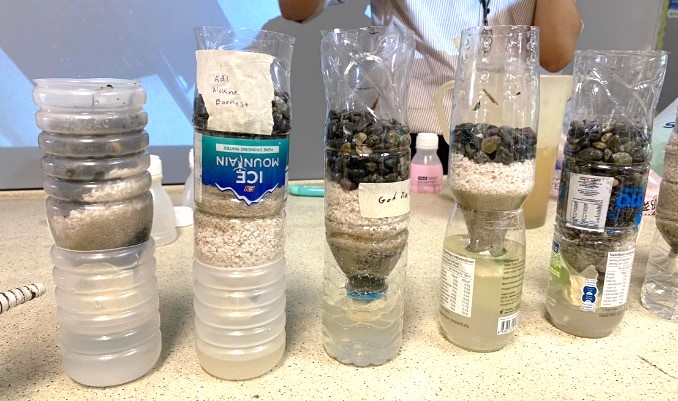 Students’ experiments with water filtration.
Students’ experiments with water filtration.
Although it was challenging, I think the team was encouraged to see students being engaged during the lessons. Seeing them work with recycled materials provided to come up with creative solutions was heartening.
What did the team had in mind when planning the programme?
Mr Justin Thong: The ALP is meant for all Lower Secondary students, so we kept the programme broad enough to cater to the diverse interests of the students.
Quite a bit of our ALP is naturally linked to Science and technology (such as the water management and climate change modules), but we also included activities in other areas. For example, we have birdwatching trips with NParks for those who love nature and the outdoors, and upcycling arts-and-crafts workshops.
Including a wide range of themes will help us to engage everyone and help them see the relevance of sustainability in their lives.
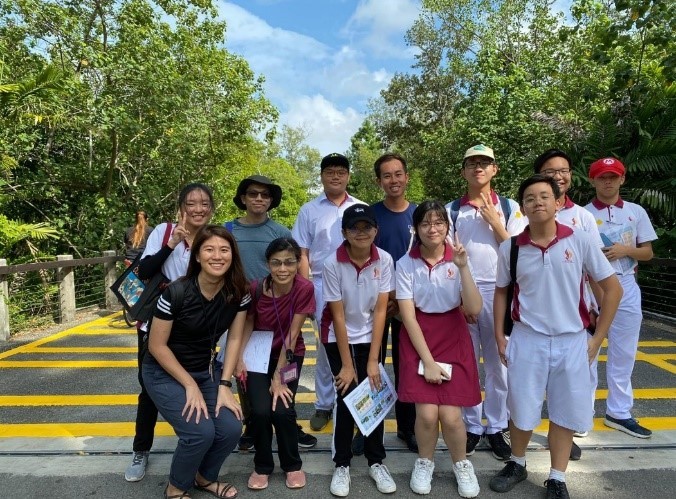 Birdwatching trips to Pasir Ris Park were also organised for students who are interested in nature. (Photo was taken before COVID-19)
Birdwatching trips to Pasir Ris Park were also organised for students who are interested in nature. (Photo was taken before COVID-19)
What are your sources of inspiration?
Ms Goh Ai Lian: I think it is helpful to think of this as an ongoing process, and accept that we will not get it perfect immediately. Just as the students’ projects must go through many iterations, the teachers have also been refining the ALP over the past 2 years. We constantly look at how our students are reacting to the activities, and discuss how we can improve on the programme.
For instance, we had an upcycling activity in 2021 where students brought their own waste materials from home to make into various useful items, such as planters, pen holders and photo frames. The teachers observed that our students enjoyed themselves and welcomed the creative challenge. Hence, we set aside more time for upcycling in 2021, and introduced a new activity for students to consolidate their learning from the ALP in a design of their own, and creating an upcycled art display using recycled wooden pallets and yarn.
We have to be prepared to change, and change again, to achieve a better outcome. In a way, this is us role modelling the spirit of inquiry and experimentation that we hope to inspire in the students.
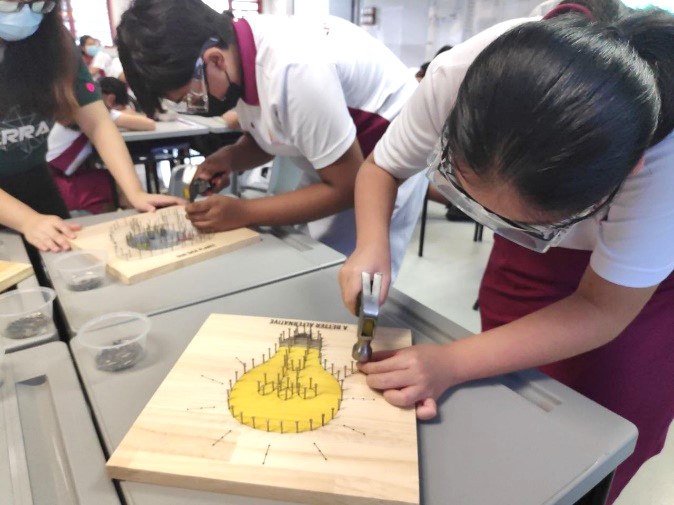 Students working on an upcycled art display board with used wooden pallets and yarn.
Students working on an upcycled art display board with used wooden pallets and yarn.
Do you have any tips to encourage students to protect the environment?
Mr Justin Thong: One thing we tried was to incorporate stories in our ALP activities. In one activity for example, we painted a scenario where ‘Water Wally’ has lost his way, and we need to help rescue him by building a water filter. In the ‘Egg Drop Challenge’, the egg represents the Earth, and students had to find ways to protect it so that it can survive an otherwise catastrophic fall.
We may assume that stories are more for younger students, but we found that even at secondary school, students appreciate stories that set the context for the activities and respond with more energy. It’s a way to make abstract concepts relevant and encourages more questions from those who may be less interested in the topic.
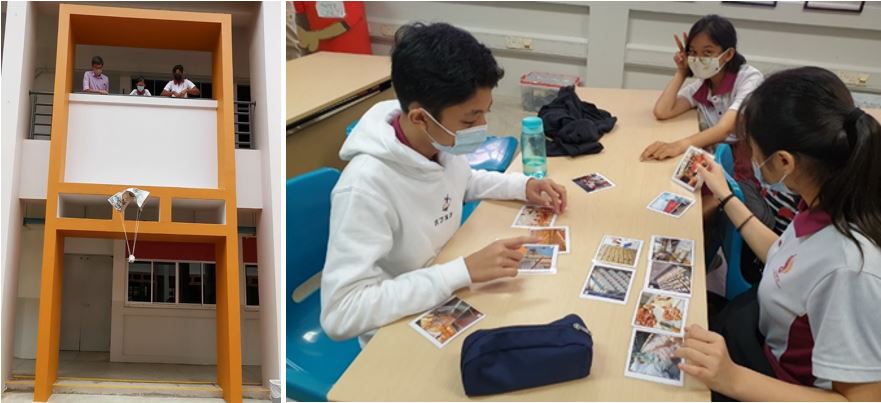 Left: The ‘Egg Drop Challenge’ where students have to find creative ways to prevent the ‘Earth’ from being smashed. Right: Piecing together the story of food waste using picture cards.
Left: The ‘Egg Drop Challenge’ where students have to find creative ways to prevent the ‘Earth’ from being smashed. Right: Piecing together the story of food waste using picture cards.
What advice do you have to share for others who are starting their own environmental programmes for students?
Ms Goh Ai Lian: One recommendation is to draw upon what you come across in your daily lives to make environmental issues relevant and real for our students.
Don’t be afraid to go beyond the lesson plan! Our team of ALP teachers are always on the lookout for interesting news and articles, and share these with each other so we can weave in what is happening in the world in our lessons.
While discussing climate change earlier in the year, we were struck by the news of the snowstorm in Texas and brought it into class for discussion. The students were initially “wow-ed” by the thought of snow covering a city. But when they heard about how the freak weather stranded thousands of people and cut off their power supply, they realised how dangerous climate change is and why it is so important to mitigate its impact.
Such teachable moments really have the power to bring lessons to life, and we have to be nimble to seize such opportunities for our students.



